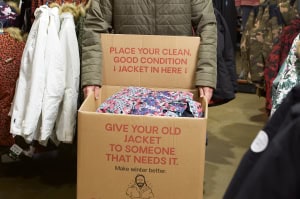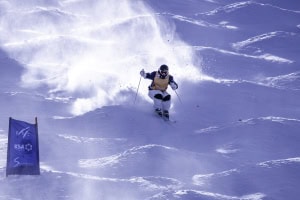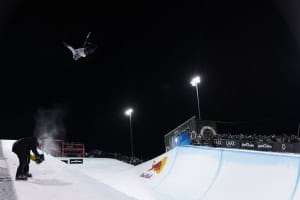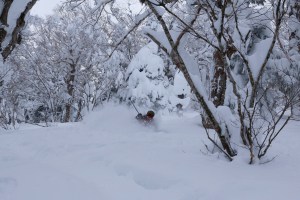What Is Snowsurf? – An Interview With Gentemstick Founder, Taro Tamai
![]()
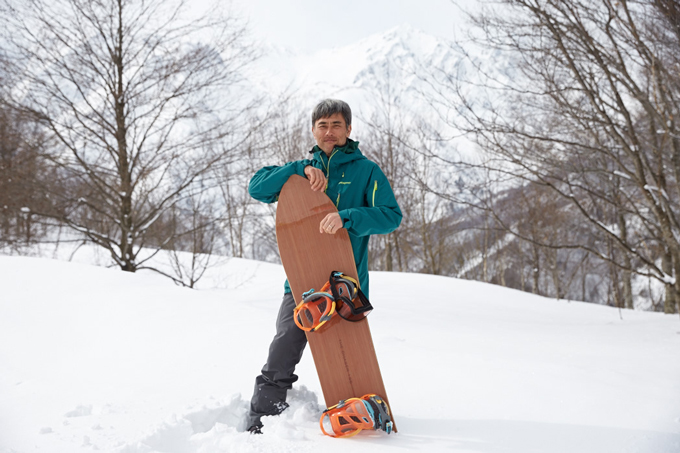 Taro has spearheaded the snow-surf movement with his unique powder-specific shapes from his home base in Niseko Image:: Andrew Fawcett
Taro has spearheaded the snow-surf movement with his unique powder-specific shapes from his home base in Niseko Image:: Andrew Fawcett
Transfer | Alex Horvath
Back in March, on a bluebird spring afternoon in Hakuba, our crew happened upon a Gentemstick x Patagonia demo day that saw all the latest Patagonia and Gentemstick products available to ride. While there, we not only had the chance to sample the whole Gentemstick range on the super creative Happo Banks set-up, we also managed to sit down and spend some time with Gentemstick founder and snow-surf pioneer Taro Tamai.
Taro walked us through the history of the Japanese snow-surf movement, and also gave us some personal insight into the Gentemstick ethos.
Gentemstick is mostly respected as the pioneer of the snow-surf movement that has been gaining so much momentum in recent times. From where did you find the inspiration to create these shapes?
The first inspiration came from a desire to surf on the mountain. This led me to want to emulate the shapes of the surfboards I was riding and bring them onto the mountain.
When I was a child, I used to ski a lot with my parents. When I got on a surfboard I really loved it, then once I found a snowboard and rode it on the mountain everything clicked. When I rode on my snowboard I started to see the terrain in a whole new way. I just wanted to surf the mountain.
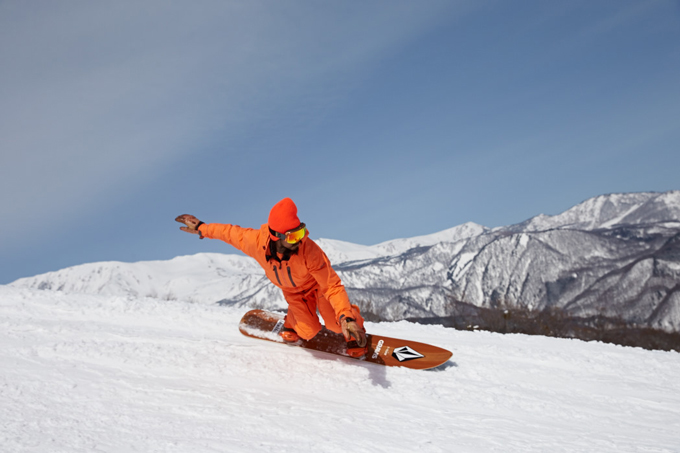
Yama San, AKA Orange-man, is a Hokkaido shredder whose unique style and trademark orange suit has become synonymous with snow-surfing Image:: Andrew Fawcett
Is it the surf influence that brings you to the shapes you create?
They are definitely surf-inspired. But just because a snowboard has a swallowtail it doesn’t work in the same way as it does on a snowboard. You need to make it work on the snow; it isn’t just about applying the same shape. Surfboards have specific shapes for different types of waves, and snowboards are the same. There are different shapes for different kinds of terrain.
Some people have created boards that just look like surfboards, but that isn’t functional. It has to make sense, and the function is crucial.
WATCH NOW: SNOW-SURF A GENTEMSTICK FAMILY STORY
Can you tell me about the materials you use?
We use mostly bamboo in the construction of the cores. We try to use it as much as possible, but we also use other core materials as well. When you combine the woods in cores, it affects the way the board works. We try to experiment to produce different results.
You’re known for the mostly handcrafted approach you use. How important is that to you?
The boards are still made in a factory, but the boards are all hand-finished. It’s not possible to create a board entirely by hand. But the finish is what’s important. A human being should do the finishing touch; this ensures the highest quality.
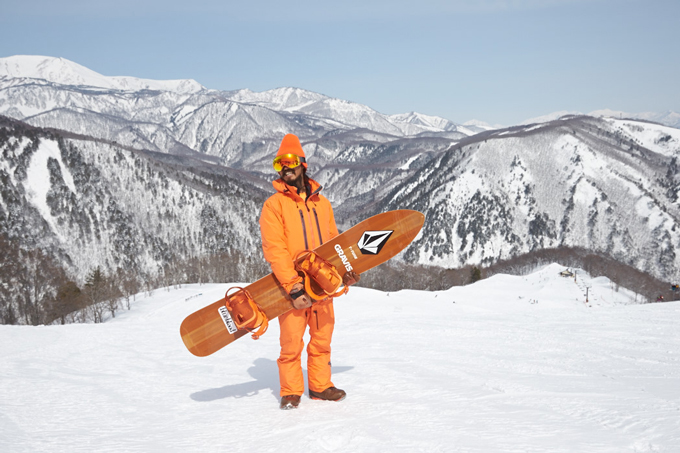
Yama at the top of the Happo Banks Snowpark in Hakuba Image:: Andrew Fawcett
How important is the environmental impact of your products?
Caring about the environment is important. I am always considering what will happen if a board is lost in the mountains, then what will the impact on the environment be as it degrades. But using an environmental ethos as a business tool has never been a consideration for my work. It just happens that way due to the attitude I take to the production. I try always to do as little harm as possible. We will need snow in the future, so our impact on the climate is important, too.
What are your hopes for the future of Gentemstick and the snow-surf movement?
Mainstream snowboarding, as in thinking about how far you can spin, or how big you can go is one part of snowboarding as a whole. Snow-surf or just turning is something that has existed since day one. The act of trying to ride the terrain as smoothly as possible and enjoying each turn is the foundation of snowboarding. I think there will be more and more people that identify with this type of snowboarding so the future will be healthy. The snow industry has brainwashed people to just one side of snowboarding; I want to liberate that and create a kind of revolution.


